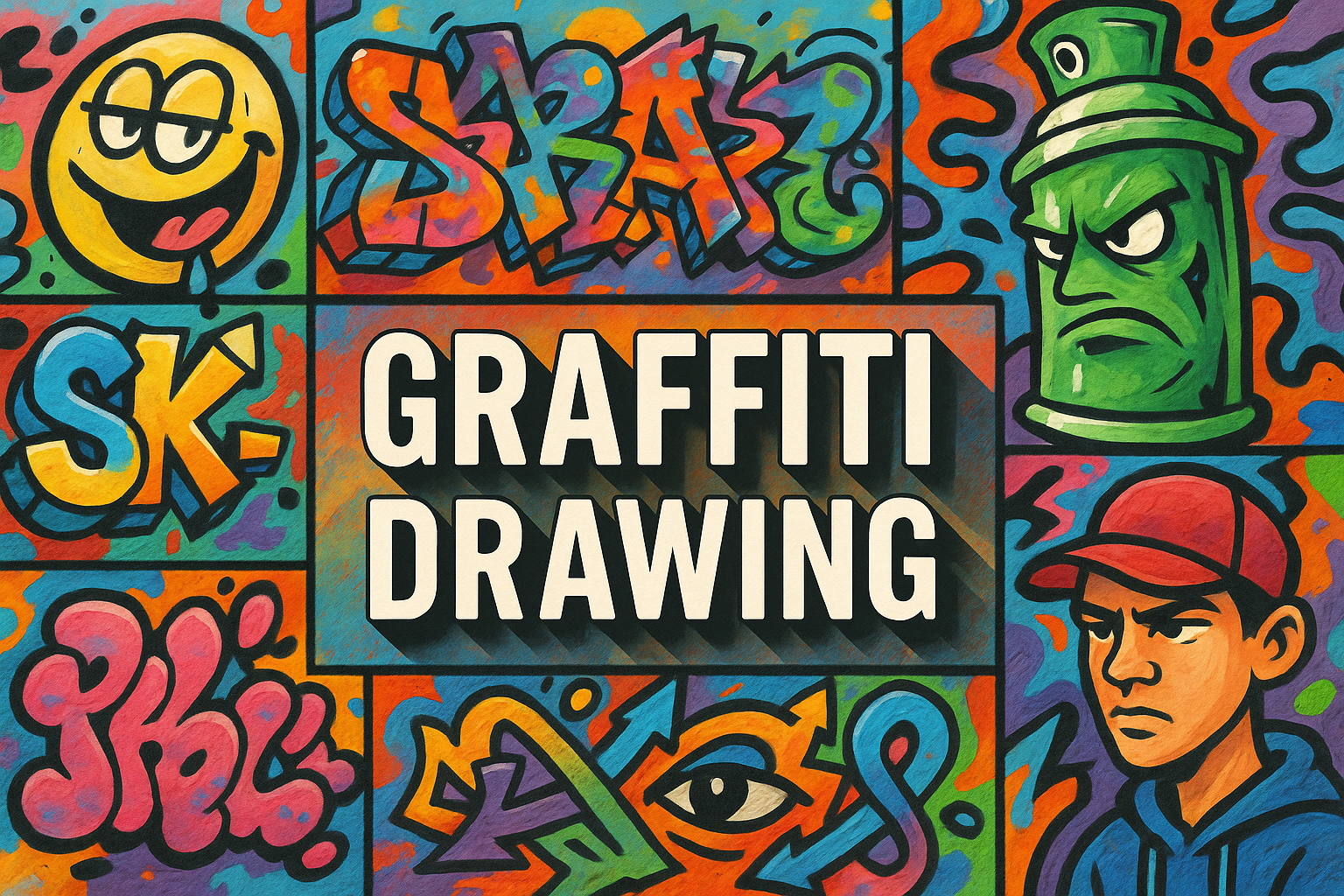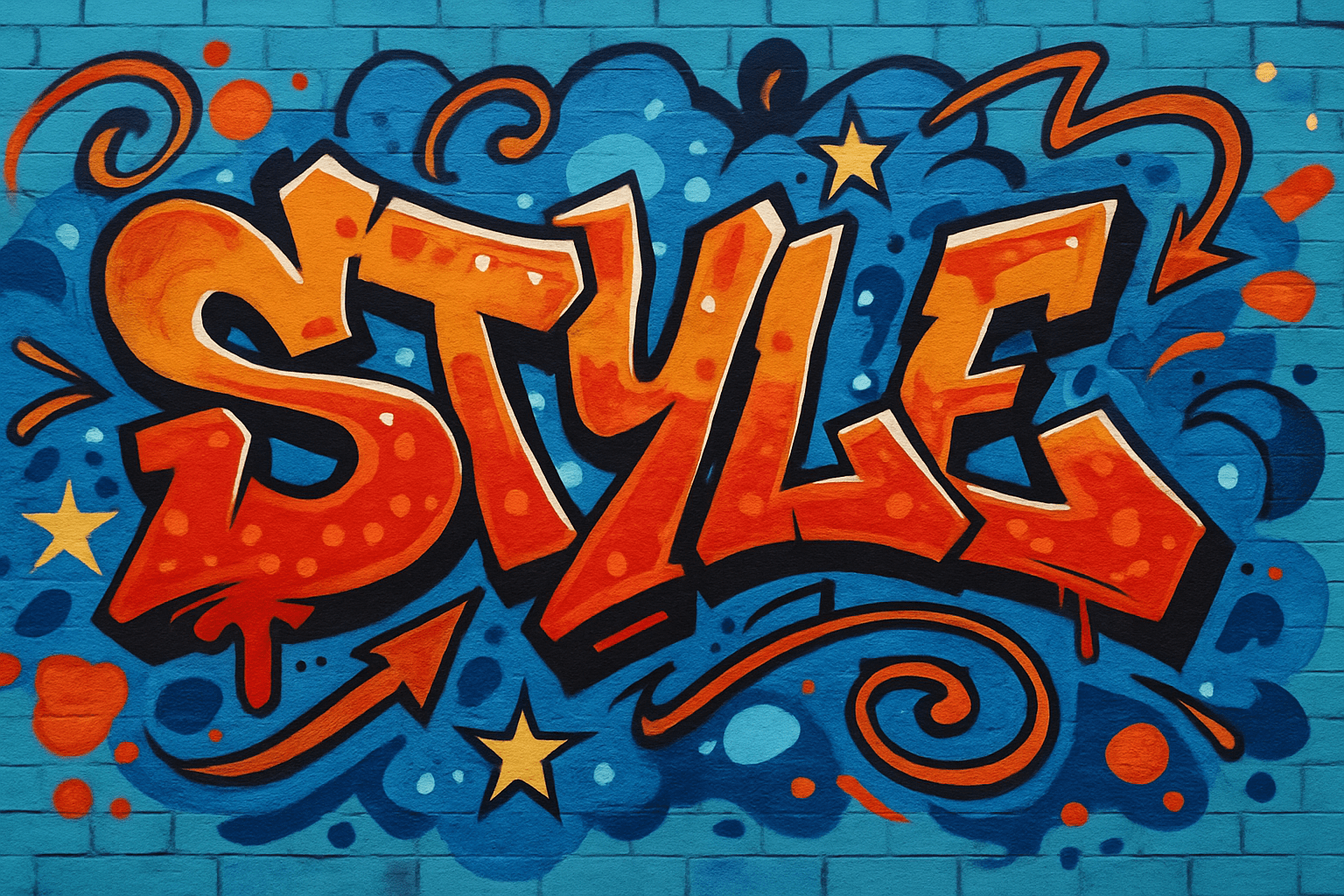
Graffiti Drawing
The art style of graffiti drawing is characterized by its use of bold colors and simple shapes. Graffiti artists often use a limited color palette to create their artworks, which often feature bright and eye-catching colors. The shapes in graffiti drawings are often simple and geometric, and the overall effect is often playful and energetic.
AOI thinking about Graffiti Drawing [+_~]-/
Overview and Quickfacts
Graffiti drawing is a type of street art that involves the use of spray paint or markers to create images or words on a surface. Graffiti artists often use bright colors and bold lines to create their art, which can be either positive or negative in nature.
Can understand it also, as:
drawing, painting, sketch, scrawl, doodle
Categorize it as:
Impressionism, Modernism
.: Dreaming :.
holds a HAIKU for the art style
:. Thought is power .:
Detailed Description
Graffiti drawing is a type of street art that has been around since the early 1970s. It is characterized by its use of bold, bright colors and often contains messages or images that are meant to be seen by the public. Graffiti artists often use their art to make social or political statements. Some of the most famous graffiti artists include Banksy, who is known for his often controversial and politically charged images, and Jean-Michel Basquiat, who was a pioneer of the graffiti art scene in New York City. Graffiti drawing can be done with a variety of different mediums, but spray paint is the most commonly used. When creating a graffiti drawing, artists will often use stencils to help create their images. If you’re interested in trying your hand at graffiti drawing, there are a few things you’ll need to get started. First, you’ll need some good quality spray paint. Second, you’ll need a surface to paint on – a wall or piece of cardboard will do. Finally, you’ll need a stencil or two to help you create your image.
.. beep, beep, beep ..
<START OF TRANSMISSION>
1. Graffiti drawing is a type of street art that involves drawing or painting on public surfaces. 2. Graffiti drawing has a long history, with some of the earliest examples dating back to ancient Greece and Rome. 3. Graffiti drawing became particularly popular in the late 20th century, with artists using it as a way to express their political and social views. 4. Today, graffiti drawing is still widely used as a form of self-expression and political protest. 5. Graffiti drawing is often seen as a form of vandalism, and many cities have laws against it. 6. Despite this, graffiti drawing has also gained acceptance as a legitimate form of art, with some artists achieving international fame. 7. Banksy is one of the most famous graffiti artists in the world, and his work often sells for millions of dollars. 8. Other well-known graffiti artists include Keith Haring, Jean-Michel Basquiat, and Banksy. 9. Graffiti drawing can be done with a variety of materials, including spray paint, markers, and paint pens. 10. Graffiti drawing is often done on walls, but can also be done on sidewalks, trains, and other public surfaces. 11. Graffiti artists often use their work to send a message or express an opinion on current events. 12. Graffiti drawing can be a dangerous activity, as it is often done in illegal places and can lead to confrontation with the authorities. 13. Graffiti artists often take risks to get their work seen by the public, and many have been arrested or fined as a result. 14. Graffiti drawing is often seen as a symbol of rebellion and non-conformity. 15. Many graffiti artists use pseudonyms or aliases to protect their identity. 16. Graffiti art can be found in cities all over the world, including New York, London, Paris, and Berlin. 17. There are also many online communities dedicated to graffiti art, where artists can share their work and connect with others. 18. Graffiti drawing is a dynamic and ever-changing art form, with new styles and techniques constantly being developed. 19. Graffiti art is often seen as a form of self-expression, and many artists use it as a way to communicate their thoughts and feelings. 20. Graffiti drawing is a unique and powerful form of art that has the ability to transform public spaces and engage people in a variety of ways.
<EOF>
.. robbel bob
Visual Examples from our image gallery
Coming soon, we are so slow .. might never come
Artists, Paintings, and more
(be aware, can be highly speculative)
Artists (be aware, speculation possible):
1. Jean-Michel Basquiat (1960-1988) 2. Keith Haring (1958-1990) 3. Banksy (1974-) 4. Shepard Fairey (1970-) 5. Futura 2000 (1955-) 6. D*Face (1978-) 7. Swoon (1977-) 8. Stik (1979-) 9. Vhils (1987-) 10. Obey Giant (1970-) 11. Invader (1969-) 12. C215 (1974-) 13. M-City (1984-) 14. Daim (1974-) 15. Tilt (1979-) 16. Rero (1977-) 17. Jef AÃÂérosol ( 1957-) 18. Speedy Graphito (1960-) 19. Miss Van (1973-) 20. Zevs (1977-) 21. LÃÂÃÂAtlas (1981-) 22. Sainer (1982-) 23. Etam Cru (1984-) 24. Fintan Magee (1987-) 25. Ludo (1983-) 26. Vexta (1984-) 27. Rone (1982-) 28. Fafi (1975-) 29. Herakut (1987-) 30. Arofish (1984-)
Artworks (be aware, speculation possible)
1. “The Death of Marat” by Jacques-Louis David (1793) 2. “The Hay Wagon” by Jean-Francois Millet (1850) 3. “The Third of May 1808” by Francisco Goya (1814) 4. “The Raft of the Medusa” by Theodore Gericault (1819) 5. “The Death of Sardanapalus” by EugÃÂène Delacroix (1827) 6. “Liberty Leading the People” by EugÃÂène Delacroix (1830) 7. “The Barque of Dante” by EugÃÂène Delacroix (1822) 8. “Scene of the Massacre of Chios” by EugÃÂène Delacroix (1824) 9. “The Massacre at Chios” by EugÃÂène Delacroix (1824) 10. “The Death of Caesar” by Vincenzo Camuccini (1804) 11. ” Napoleon Bonaparte” by Jacques-Louis David (1812) 12. “The Oath of the Horatii” by Jacques-Louis David (1784) 13. “The Death of Socrates” by Jacques-Louis David (1787) 14. “The Consecration of the Emperor Napoleon and the Coronation of the Empress Josephine in the Cathedral of Notre-Dame de Paris” by Jacques-Louis David (1805ÃÂÃÂ1806) 15. “The Entombment of Christ” by Jacopo Bassano (1545) 16. “The Last Supper” by Jacopo Bassano (1542) 17. “The Baptism of Christ” by Jacopo Bassano (1567) 18. “The Calling of Saint Matthew” by Caravaggio (1599ÃÂÃÂ1600) 19. “The Conversion of Saint Paul” by Caravaggio (1599ÃÂÃÂ1600) 20. “The Crucifixion of Saint Peter” by Caravaggio (1601) 21. “The Martyrdom of Saint Matthew” by Caravaggio (1600) 22. “The Beheading of Saint John the Baptist” by Caravaggio (1608) 23. “Nativity with Saint Francis and Saint Lawrence” by Caravaggio (1609) 24. “The Adoration of the Shepherds” by Gerard van Honthorst (1622) 25. “The Adoration of the Kings” by Gerard van Honthorst (1623) 26. “The Entombment of Christ” by Gerard van Honthorst (1620) 27. “The Four Evangelists” by Rembrandt (1661) 28. “The Raising of the Cross” by Rembrandt (1633) 29. “The Return of the Prodigal Son” by Rembrandt (1662) 30. “The Sacrifice of Isaac” by Rembrandt (1635)
Epoch
The time period of the art style Graffiti Drawing is the late 20th century to the present.
AI ART RESSOURCES (AKA, well Tools)
Helping tools -> predefined search links on other pages:











